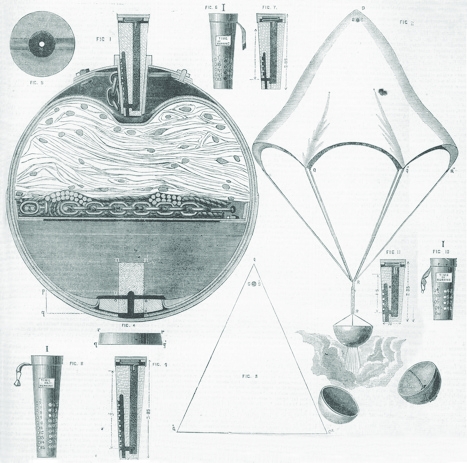Illuminating the enemy
The ground light ball was one of the earliest military methods of casting light on an enemy’s position at night. It faced a number of challenges, including inaccurate positioning and flimsy construction.
The ball was usually made up of an inflammable short cylinder placed within a frame of hoop iron. A mixture of sulphur, saltpetre, resin and linseed oil was placed in canvas and wrapped around the cylinder.
In an article written in 1871, The Engineer was critical of its design. ‘Its elongated form is quite unsuited to smooth-bored ordnance. It is fragile and can only bear a small firing charge. The composition is by no means the one that gives the most brilliant light.’

In 1850, General Boxer attempted to address these problems by introducing a light ball attached to a parachute. The design consisted of two outer and two inner hemispheres of tinned iron. A fuse triggered a bursting charge, igniting the mixture within while a parachute controlled the rate of descent.
Despite being more accurate, the parachute light ball could only burn for two and a half minutes, while the ground light ball lasted for an average of sixteen minutes.
Register now to continue reading
Thanks for visiting The Engineer. You’ve now reached your monthly limit of premium content. Register for free to unlock unlimited access to all of our premium content, as well as the latest technology news, industry opinion and special reports.
Benefits of registering
-
In-depth insights and coverage of key emerging trends
-
Unrestricted access to special reports throughout the year
-
Daily technology news delivered straight to your inbox











Water Sector Talent Exodus Could Cripple The Sector
Maybe if things are essential for the running of a country and we want to pay a fair price we should be running these utilities on a not for profit...